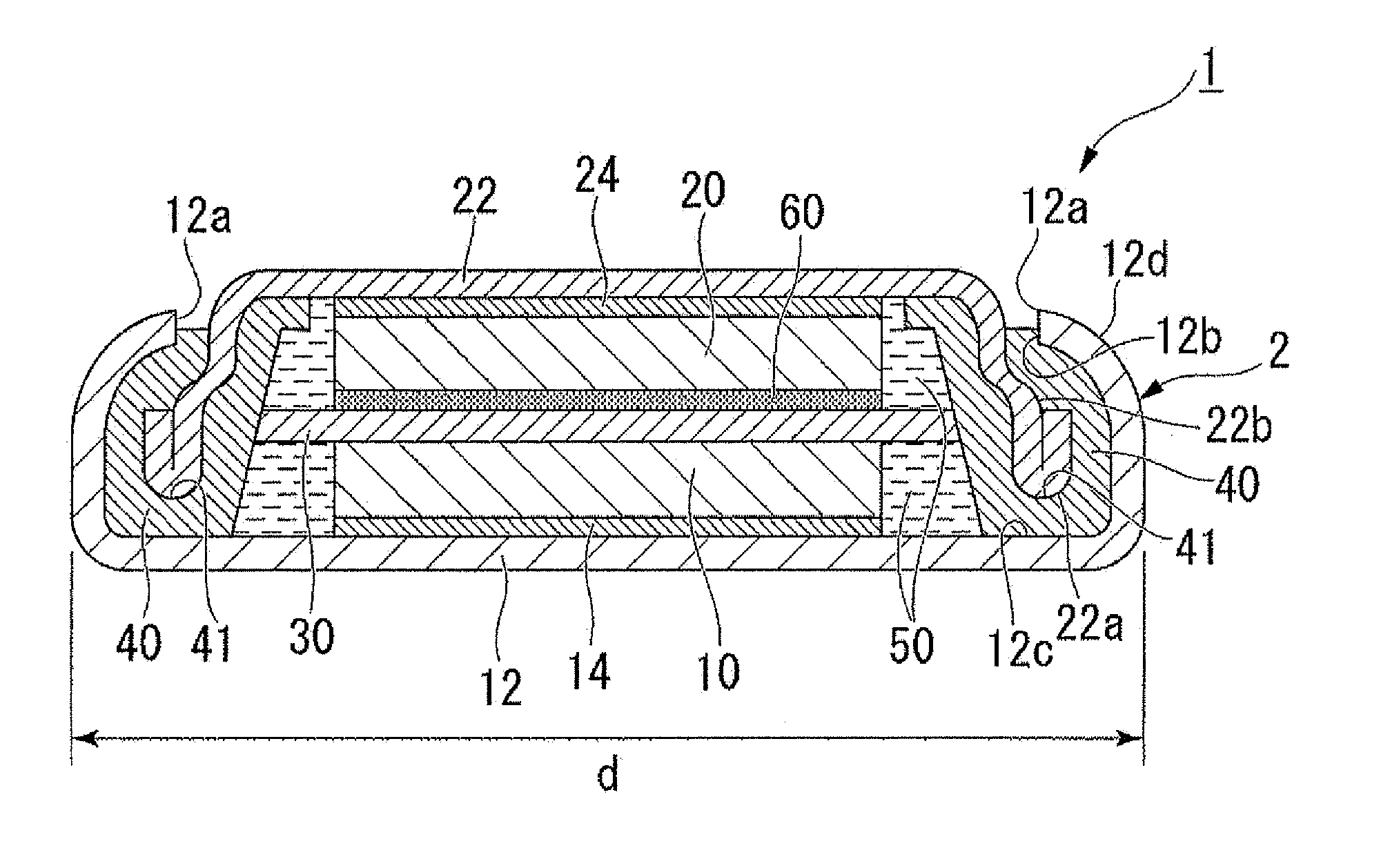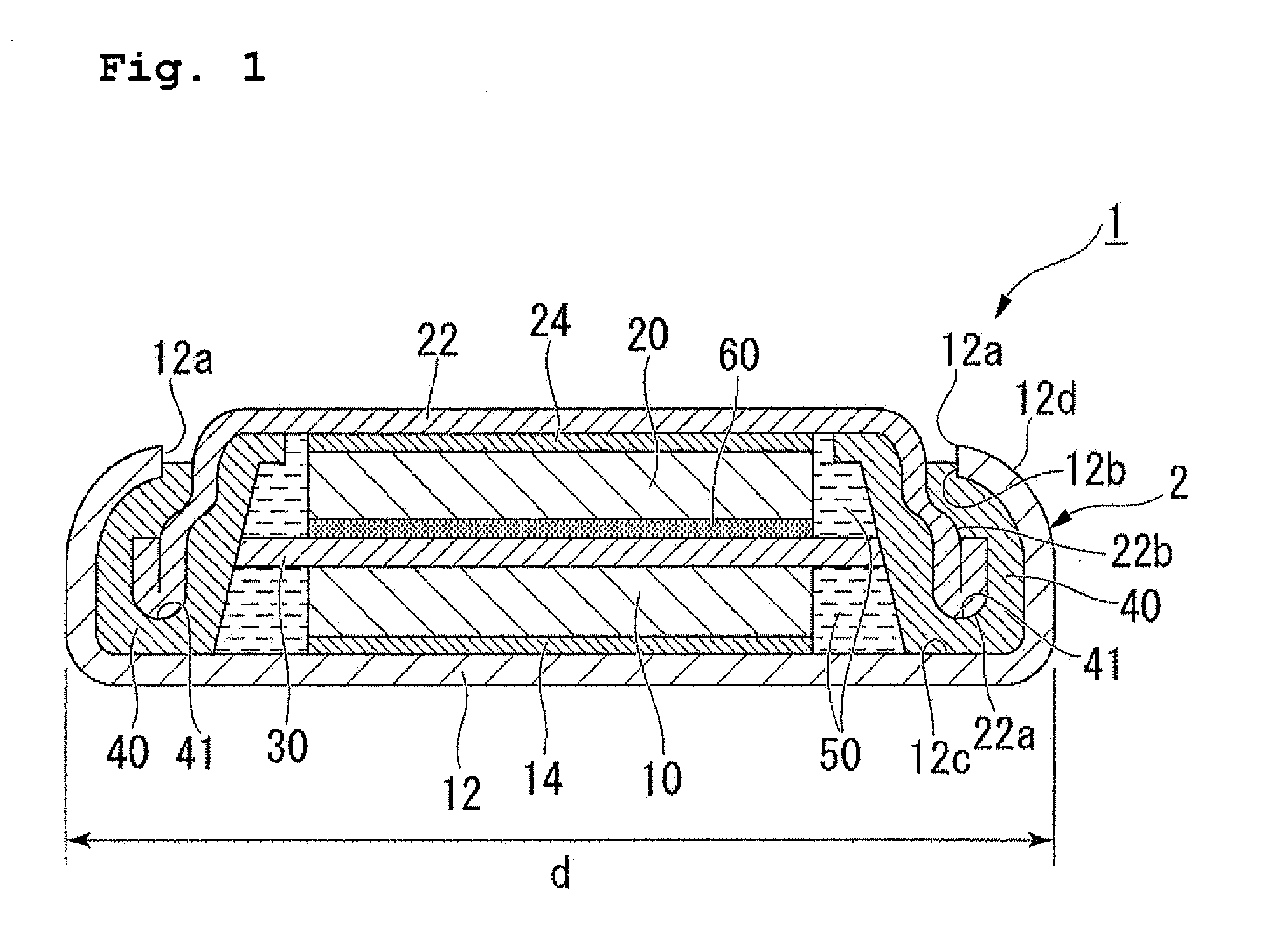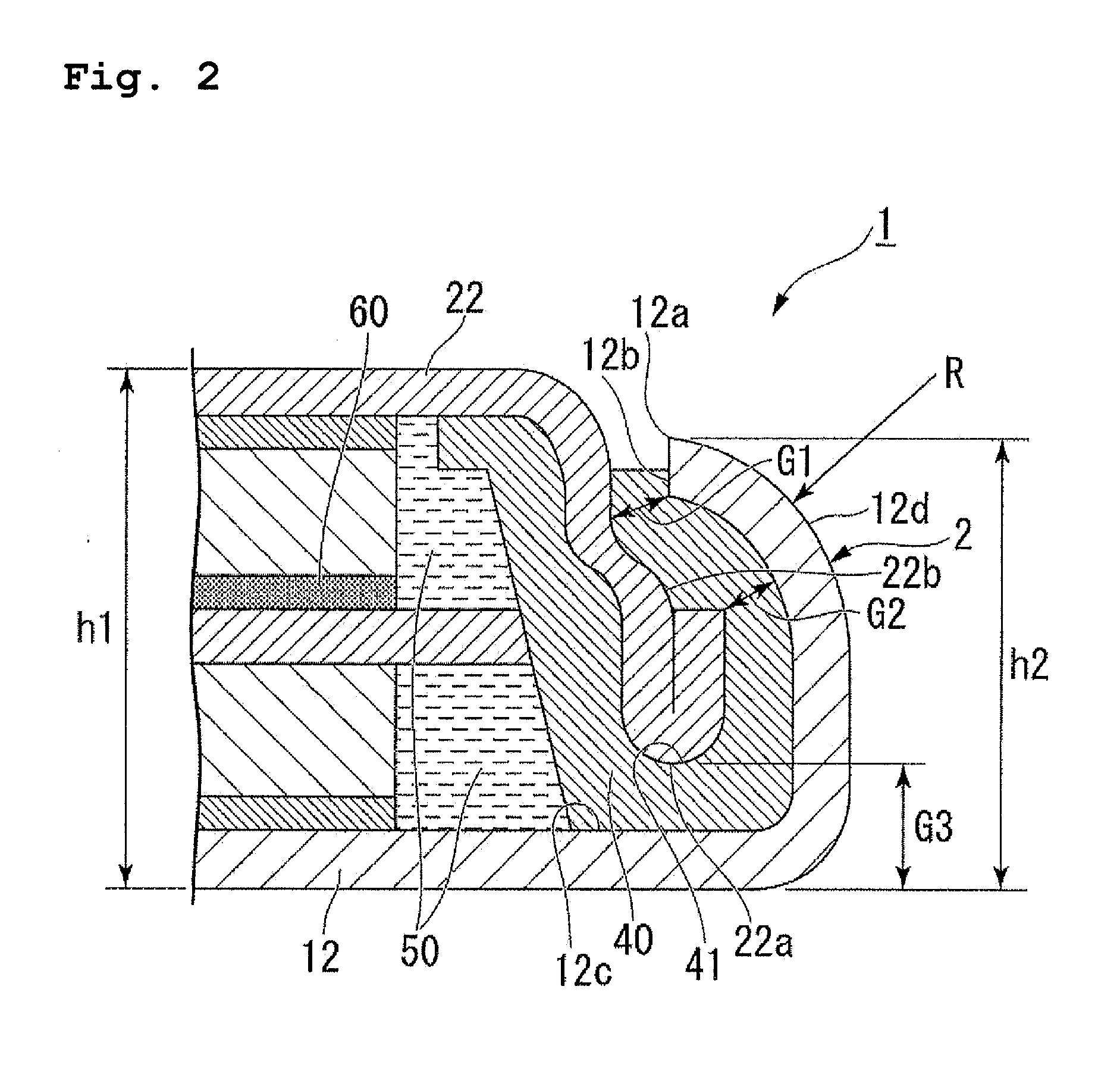Nonaqueous electrolyte secondary battery
- Summary
- Abstract
- Description
- Claims
- Application Information
AI Technical Summary
Benefits of technology
Problems solved by technology
Method used
Image
Examples
examples
[0172]Next, the invention will be described in more detail with reference to Examples and Comparative Examples. However, a range of the invention is not limited by Examples. The nonaqueous electrolyte secondary battery related to the invention may be embedded by making appropriate modifications in a range not departing from the gist of the invention.
examples 1 to 4
[0173]In Example 1, as the nonaqueous electrolyte secondary battery, the coin-type nonaqueous electrolyte secondary battery illustrated in FIG. 1 was prepared. In addition, in these examples, lithium titanate (Li4Ti5O12) was used as the positive electrode active material, and SiO was used as the negative electrode active material. A nonaqueous electrolyte secondary battery (lithium secondary battery) of a coin-type (920 size) having an outer diameter of 9.0 mm (diameter d) and a thickness of 2.0 mm (height h1) in a cross-sectional view illustrated in FIG. 1 was prepared, and sealing properties under a high-temperature and high-humidity environment were evaluated.
[0174]Preparation of Battery
[0175]With regard to the positive electrode 10, first, graphite as a conductive assistant and polyacrylic acid as a binding agent were mixed to commercially available lithium titanate (Li4Ti5O12) in a ratio of lithium titanate:graphite:polyacrylic acid=90:8:2 (a mass ratio) to prepare a positive e...
examples 5 and 6
Preparation of Battery
[0196]In Examples 5 and 6, coin-type nonaqueous electrolyte secondary batteries illustrated in FIG. 1 were prepared in accordance with the same conditions and the same procedure as in Example 4 except that with respect to the preparation conditions of the battery in Example 4, the radius of curvature R (mm) of the side surface portion 12d of the positive electrode casing 12 was changed to a dimension shown in the following Table 2.
[0197]Evaluation of Internal Resistance
[0198]With respect to the nonaqueous electrolyte secondary batteries of Examples 5 and 6 which were obtained in the above-described procedure, the following high-temperature storage test was performed to evaluate a variation in the internal resistance under a high-temperature environment.
[0199]Specifically, first, the internal resistance (Ω) between the positive electrode and the negative electrode of the nonaqueous electrolyte secondary batteries which were obtained was measured by the same meth...
PUM
 Login to View More
Login to View More Abstract
Description
Claims
Application Information
 Login to View More
Login to View More - R&D
- Intellectual Property
- Life Sciences
- Materials
- Tech Scout
- Unparalleled Data Quality
- Higher Quality Content
- 60% Fewer Hallucinations
Browse by: Latest US Patents, China's latest patents, Technical Efficacy Thesaurus, Application Domain, Technology Topic, Popular Technical Reports.
© 2025 PatSnap. All rights reserved.Legal|Privacy policy|Modern Slavery Act Transparency Statement|Sitemap|About US| Contact US: help@patsnap.com



